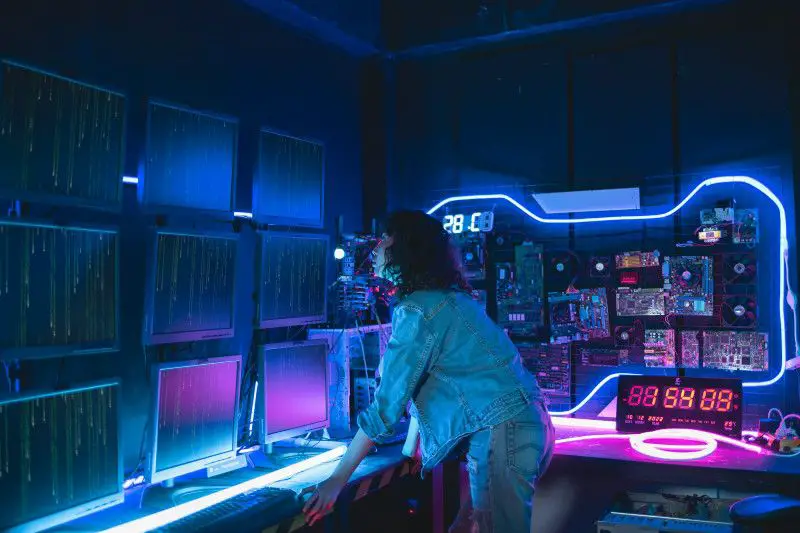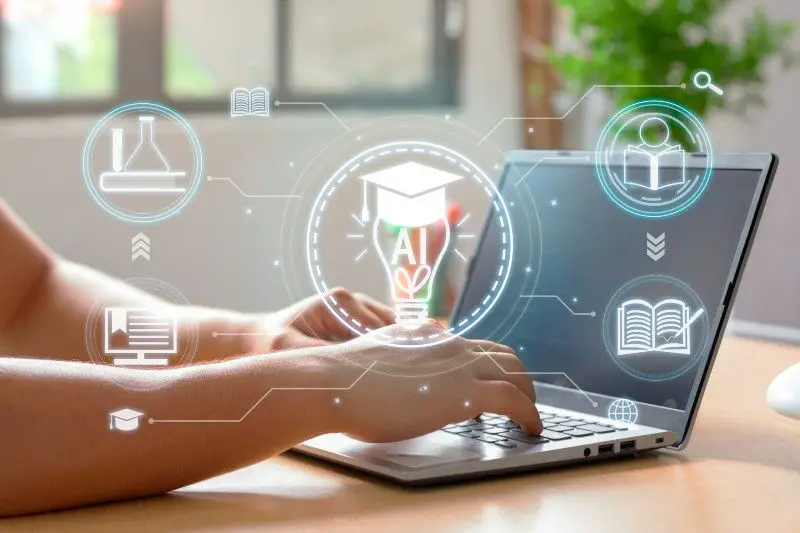Introduction
In the grand panorama of technological advancements, artificial intelligence (AI) and robotics have always had an intricate pas de deux, with each discipline continually pushing the other to new heights. Their intersection is shaping an exciting future, enabling robots to become increasingly intelligent, adaptable, and capable of performing complex tasks. It’s no longer about automated machines following a set of preprogrammed instructions. We’re in an era where robots are learning, evolving, and making autonomous decisions, thanks to AI.
While AI and robotics are distinct fields, their union creates a synergy that brings about a significant enhancement in the functionality and applicability of robotic systems. The journey of AI from being a scientific curiosity to being the brain behind sophisticated robots has been extraordinary. Through this narrative, we’ll examine how AI shapes the future of robotics, how machine perception empowers robots, the fascinating world of humanoid robots, and how AI is augmenting robotic capabilities.
The roles AI and robotics play in our lives are rapidly changing. The amalgamation of these technologies isn’t confined to the realm of science fiction anymore. Today, we’re experiencing the transformative power of this fusion in various sectors like healthcare, manufacturing, defense, and even our homes. This tale of intelligence begins with understanding the role of AI in robotics.
Defining the Role of AI in Robotics
In essence, AI endows robots with the intelligence they require to execute tasks autonomously. Traditional robots can perform repetitive tasks efficiently but falter when it comes to decision-making, adaptability, and learning from their environment. However, with AI, robots can analyze and learn from data, adapt to varying situations, and even anticipate outcomes based on their learning.
AI essentially serves as the brain for robotic systems, allowing them to understand and interpret the data they collect, make decisions based on that understanding, and act upon those decisions. The integration of AI into robots has opened up a plethora of possibilities, from simple household chores to complex industrial operations, medical procedures, and even space exploration.
Artificial Intelligence and Deep Learning with Python
Are you wearied by deep learning resources that don’t clarify every single line of code? “Artificial Intelligence and Deep Learning with Python” revolutionizes the way deep learning, AI, and Python are introduced to beginners. The author draws an insightful analogy, equating a computer language with any other language, asserting that understanding every component of a sentence or a line of code is vital to generate novel ones. Unlike other resources claiming to be for “beginners”, this book stands out by dissecting and explaining every line of code.
There’s nothing more perplexing than encountering an unexplained line of code after an initially well-explained one. This book ensures a seamless learning journey with comprehensive explanations for each line of code in every project discussed, along with detailed insights into deep learning and AI concepts. Whether you’re a Python novice or a seasoned programmer, this book will guide you through the intriguing applications of Python in diverse AI and deep learning projects.
You’ll dive into captivating projects and topics, including:
- Deep learning applications in audio/music and voice recognition
- Neural network implementations with image files
- Creating an algorithm for predicting stock prices
- Applying AI through Thompson sampling
- Using deep learning for crime statistic predictions
- Binary classification with neural networks
- Building a Convolutional Neural Network (CNN) for your image files
- Teaching your computer to “read” and “comprehend” the English language
- SQL integration with neural networks
About the author: Steven D’Ascoli, an adjunct professor at St. John’s University, is renowned for his multi-disciplinary expertise.
How AI is Shaping the Future of Robotics
AI is poised to reshape the future of robotics by endowing robots with advanced capabilities such as machine learning, natural language processing, and computer vision. Machine learning enables robots to learn from their experiences and improve their performance over time.
Boston Dynamics’ Spot, a robot dog that can navigate challenging terrains and even recognize specific objects and individuals, is an excellent example. Another instance is the Curiosity Rover by NASA, which uses AI to navigate the Martian surface independently and conduct scientific experiments.
Learn more about the benefits of websites here
AI and Machine Perception in Robotics
Machine perception in robotics, facilitated by AI, enables robots to perceive their environment much like humans do. Robots can now recognize objects, understand spoken commands, and even interpret human emotions.
Sophia, the world’s first robot citizen, is a prime example of machine perception at work. Sophia can engage in meaningful conversations, recognize faces, and understand human emotions, all thanks to AI.
The Intersection of AI and Humanoid Robots
The fusion of AI and robotics is nowhere more apparent than in the realm of humanoid robots. These robots, designed to mimic human appearance and behavior, are being increasingly empowered by AI. This allows them to perform complex tasks, understand and react to human emotions, and even learn and adapt over time.
Hanson Robotics’ humanoid robot, Sophia, is an epitome of this intersection. Sophia can mimic human facial expressions, engage in conversations, and learn from her interactions. Anotherexample is the ASIMO from Honda, which can recognize moving objects, postures, gestures, its surrounding environment, sounds and faces, making it interact with humans intelligently.
How can AI-based tools help improve the quality of telemarketing calls?
How AI is Improving Robotic Capabilities
AI is dramatically augmenting robotic capabilities, propelling them from simple automation to self-learning systems. With the advent of machine learning algorithms, robots can learn from their experiences, adapt to new situations, and even predict future outcomes based on historical data. This transition is particularly evident in sectors like healthcare, where robots like Da Vinci Surgical System can perform intricate surgeries with precision and minimal invasiveness.
In the realm of service robots, we witness AI’s impact on robotic capabilities in examples like Roomba, the autonomous vacuum cleaner that learns the layout of your home and adapts its cleaning path. Similarly, AI has empowered collaborative robots (cobots) like Baxter and Sawyer, enabling them to work alongside humans safely, learn from their environment, and perform tasks more efficiently.
Experience unparalleled performance and reliability with Pixels Web Design’s WordPress Hosting Services, expertly engineered to empower your website with speed, security, and seamless scalability.
Conclusion
The story of AI and robotics is a compelling narrative of convergence and evolution. This interplay has redefined the boundaries of what robots can achieve, creating a new era of intelligent machines capable of learning, adapting, and making autonomous decisions. We’ve explored the definition of AI in robotics, how AI is transforming the future of robotics, machine perception in robots, and the world of humanoid robots.
This synergy has given birth to robotic systems capable of perceiving their environment like humans, understanding our language, interpreting our emotions, and engaging with us in a more human-like manner. The potential for AI to advance robotic capabilities is immense and stretches across various industries – from manufacturing to healthcare, and from space exploration to our living rooms.
The dance of intelligence between AI and robotics continues to excite and astonish. The narrative has just begun, and as AI and robotics continue to evolve and intertwine, the possibilities seem infinite. We stand at the brink of an era where intelligent robots are no longer a figment of our imagination but a part of our reality.

Why Do I Need To Understand Black Box AI in Today’s World?
Discover how Black Box AI is transforming retail, shaping public understanding, advancing computer vision, and navigating ethical AI challenges

What Is The Role Of Black Box AI in Our Future? Read about It Here
Explore the role of Black Box AI in modern industries, its impact on robotics, and how it’s influencing the workforce and future work trend



